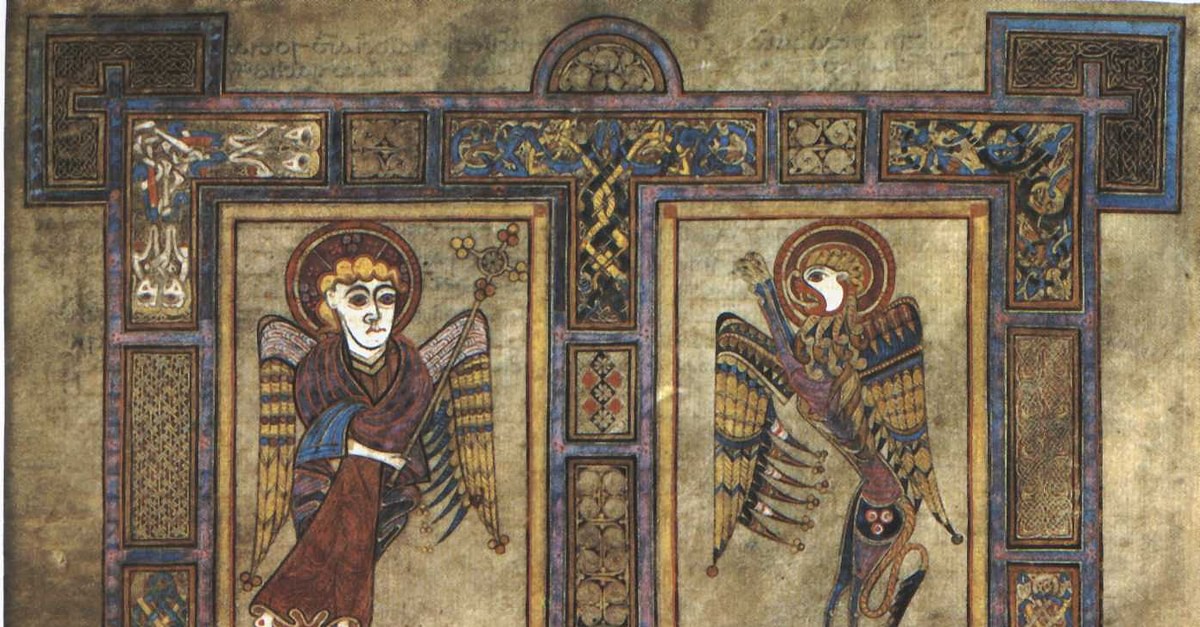
For me, one of the greatest pleasures of travel is the personal encounter with great art, which I have collected in a book called "Europe's 100 Greatest Masterpieces" . This is one of my favorites:
Jesus Christ is sitting on the throne and solemnly embraces something very important: a book, the Holy Word of God, he has a wonderful head with curly blonde hair and a thoughtful expression on his face. It is located under an arch surrounded by a maze of colorful and intricate patterns.
This illustration from an ancient Bible tells the story of Jesus. This very image appeared at the same moment in history (Matthew 18:1) when this heavenly Messiah was born on humble human earth.
This is just one page from a wonderful 1200 year old Bible known as the Book of the Cross. Perhaps the greatest work of art from the Middle Ages, this book is a rare artifact from that turbulent period.
The year 800 has arrived. The Roman Empire has collapsed, leaving Europe in shambles. Vikings raped and robbed. The Christian faith, which had been officially accepted in the last years of the empire, now wavered as Europe reverted to its illiterate pagan ways. Amidst the turmoil, on the far reaches of Europe, lived a group of educated Irish monks dedicated to healing the coals of civilization.
These monks worked to preserve the word of God in the Book of Kilis. They slaughtered 185 calves and dried their skins to make 680 cream-colored pages called manuscripts. Then the skinhead monks gathered swan feathers and went to work. They carefully wrote Latin words, decorated letters with intricate braids, and interspersed the text with full-page illustrations, creating this "illuminated" manuscript. The project was interrupted in 806 when the Vikings brutally sacked the monastery and killed 68 monks. But those who survived fled to Kell Abbey (near Dublin) and finished their precious Bible.
"Christ Enthroned" is only one page - 1/680 - of this wonderful book. Upon closer inspection, amazing detail work is revealed on the page. On either side of Christ are two mysterious men wearing cloaks, two ugly-looking angels with arms folded forward. On the sides of Christ's head are peacocks (symbols of Christ's Resurrection), whose legs are intertwined with vines (symbols of his Israelite roots). Of course, Christ is not very realistic: he is crucified, like a Byzantine icon, with almond eyes, ears in a strange position, strange fingers.
The real beauty lies in the extravagant design. It is a forest of snails and eddies and entwined snakes: yes, they are snakes, with little heads sticking out here and there. Monks mixed Christian symbols (cross, peacock, vine) with pagan Celtic motifs from the surrounding world (circles, spirals, intricate motifs). All in bright colors - blue, purple, red, green, yellow and black - carefully engraved with pen. Of the 680 pages of the book, only two are incomplete.
As Christianity regained its power in Europe, monasteries everywhere began to produce similar monastic documents, though few were as magnificent as the Book of Kells. In 1455 Johann Gutenberg invented the printing press and books began to be mass produced... Thousands of monks lost their role as servants of civilization.

